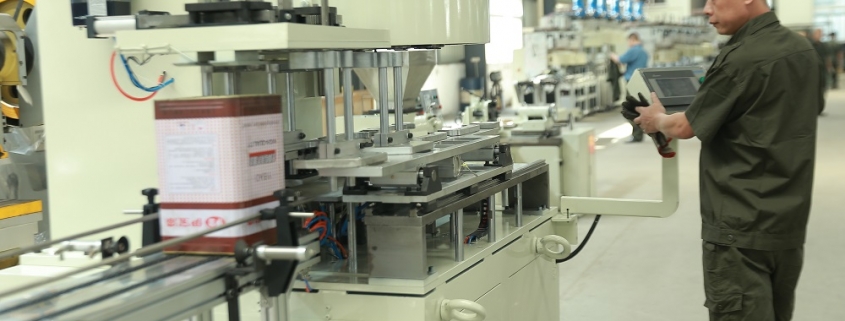The Breakthrough of Coated Iron Can Technology Brings More Possibilities
As we all know, metal coated materials including coated iron and coated aluminum are not only more in line with the national environmental protection policy, but also meet the requirements of the continuous improvement of the technical level of metal packaging products, giving metal packaging the ever-changing changes. At the same time, in the Japanese market where it originated, the applications have been very successful in both beverage cans and food cans. This is also the reason why all parties are still optimistic about its development in the domestic metal packaging industry even though the companies involved in the localization of coated iron have gone through a ten-year process and it seems that there is no harvest.
In recent years, with the participation of several companies in the R&D and production of coated iron, the coated iron has made significant progress in production technology and product quality. The application fields, promotion methods and channels are more extensive than in the early days, and the demand is increasing year by year. .
Despite this, due to the two factors of material performance, cost, can making (forming) and related supporting technologies, the current problems of “more types, less batches and less materials” of coated iron have not been effectively improved. Large-scale application has never been realized – the annual demand is less than 8% of the annual production capacity, and so far it has not brought significant economic benefits to the relevant enterprises.
Material-side factors Material-side factors include material performance and cost. The two complement each other and are related to each other. They are embodied in the following aspects.
First of all, in the early stage of research and development, the coating technology and polymer film materials of coated iron are in the exploratory stage, and there are no conditions to adjust the performance of chrome-plated iron, resulting in quality defects in the coated products and small production batches, which makes the coated iron Material costs remain high and lack market competitiveness.
Secondly, there is a certain degree of lag in the research and development and supply of polymer films due to production cost factors. In terms of weight ratio, the polymer film is about 3.3%, and the polymer film required for 10,000 tons of coated iron can be produced in just one week. Therefore, in the early stage of research and development, various polymer film formulations were ordered by the film production enterprises on an hourly basis, and the production cost was very high due to the small amount. As a result, the cost of coated iron is clearly at a disadvantage compared to coated iron without mass production.
Third, in the early days, there was only one domestic company that researched and supplied coated iron materials. It may be that the exclusive supply has no competition relationship and high cost. Users are generally reluctant to try or use it for a long time, which makes it difficult to promote domestic coated iron in the domestic market.
The factors of can making and related supporting technologies are subject to the shortcomings of earlier can making and related supporting technologies. Coated iron has not achieved significant gains in both its more application-advantaged fields and the huge demand market. , for two reasons. On the one hand, in terms of application, coated iron is most suitable for making DRD two-piece cans and lids. Due to the lack of product types and demand for coated iron in China in the early days, the lids are available in quantity but use less material; more importantly, the DRD two-piece can production line needs to improve the mold or equipment to adapt to the production of coated iron and other problems , All kinds of factors are added together, so that the development space of coated iron is seriously restricted.
On the other hand, in the huge three-piece can market, the coated iron cannot be applied to the production of three-piece cans because there are no related supporting technologies such as blank lamination and welding seam lamination.
Coated iron application: where is the way?
At present, the problems of coated iron in terms of technology, quality and single supply have been basically solved, but the whole industry seems to be still exploring its application direction, and the way forward is still unclear. The author believes that the current coated iron industry should adhere to the following two development directions.
Avoid the advantages of coated iron, and find another way to promote the application of coated iron. The practice or lessons of the past years have proved that it is not feasible for domestic coated iron to replace the coated iron. For domestic coated iron to develop, it is necessary to give full play to the advantages of coated iron in new application fields or markets where coated iron cannot reach, and to reflect the value of coated iron. The approach can be to promote coated iron products through new products and new marketing models, increase the domestic market share of coated iron products, and promote the development of a virtuous circle of the coated iron industry. Only by gradually changing the market share of coated iron products and coated iron products can coated iron products be truly respected by the industry.
Starting from can-making technology and equipment, the innovation of film-coated iron packaging is carried out. Coated iron has the advantages of deep drawing resistance, wear resistance, corrosion resistance, etc. It can be combined with the two-piece can forming technology to complement the advantages and disadvantages, and has a broader development platform.

 jjyixin
jjyixin tincanmakingmachine
tincanmakingmachine jjyixin
jjyixin